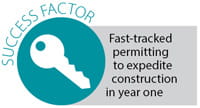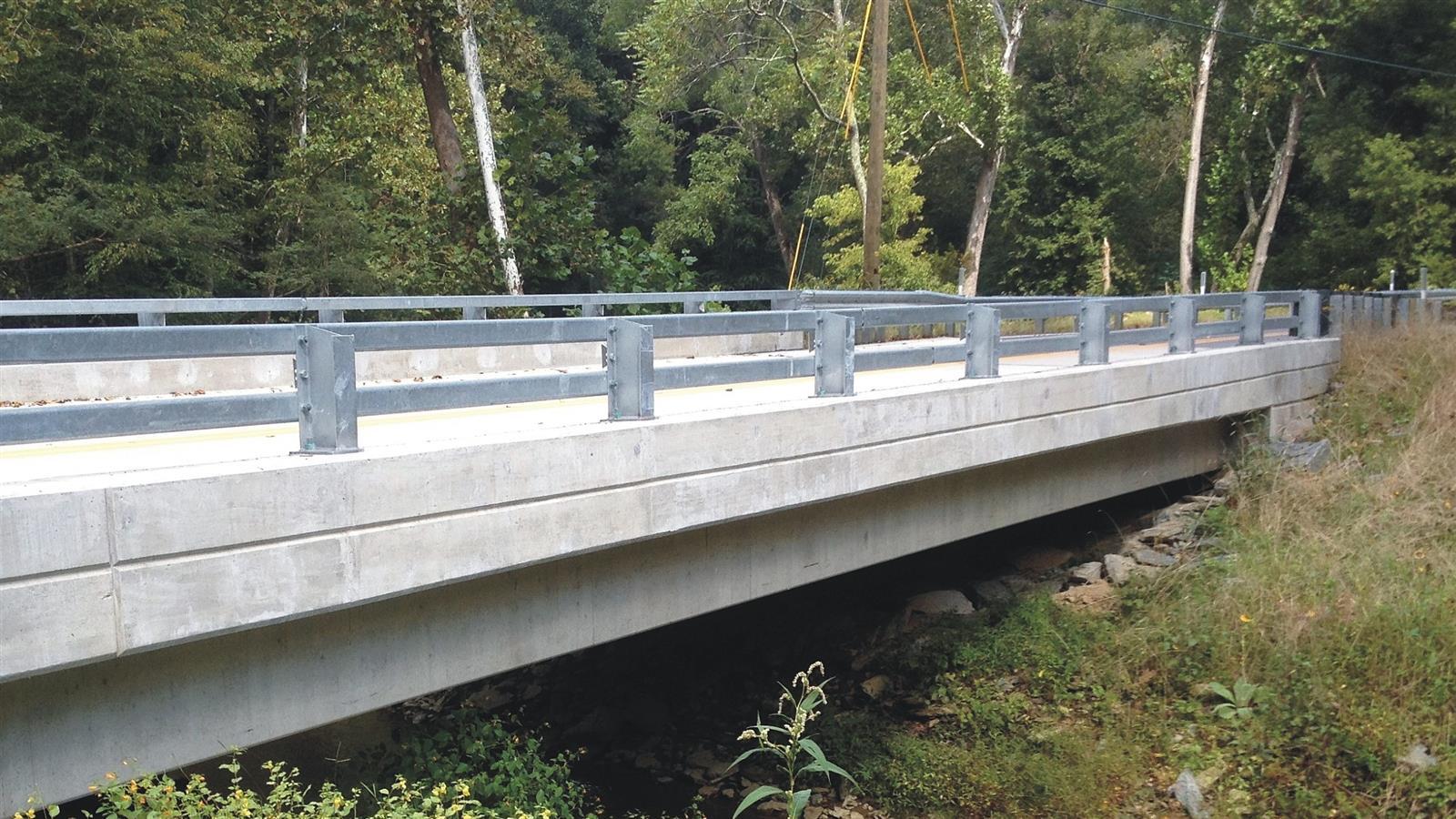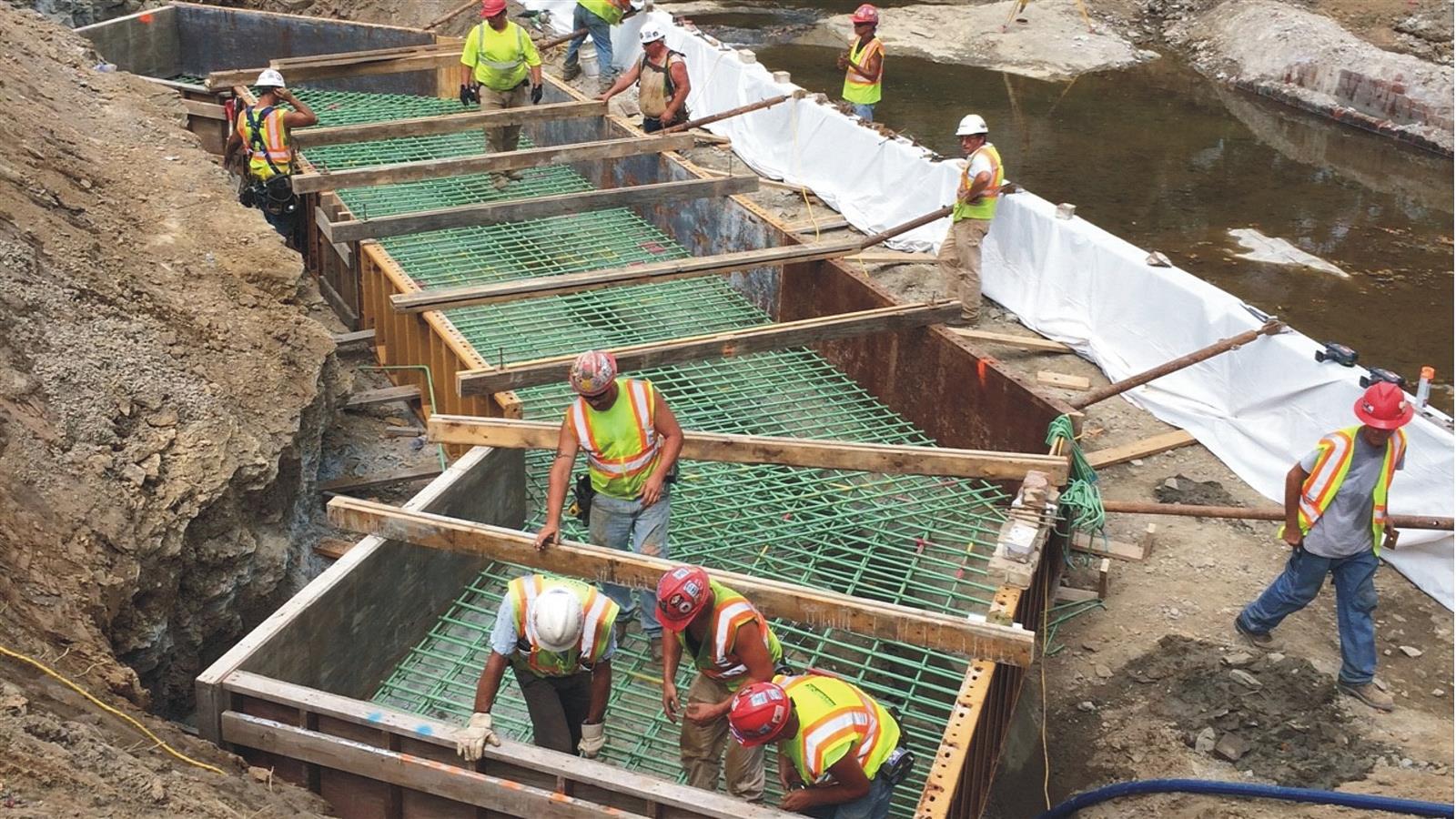P3 Procurement Accelerates 558 Bridge Replacements in Pennsylvania
A Strategic Solution to Accelerate Safety and Mobility
Inside just 3 years—by the end of 2017—an unprecedented 558 bridges had been replaced across Pennsylvania, improving safety and mobility for travelers thanks to a groundbreaking public-private partnership (P3) between the Pennsylvania Department of Transportation (PennDOT) and developer consortium Plenary Walsh Keystone Partners (PWKP). The Rapid Bridge Replacement (RBR) project originated in 2013, when PennDOT was challenged by an aging, structurally deficient (SD) bridge inventory and limited funding and resources. The department sought a cost-effective, efficient solution to replace hundreds of its roughly 4,000 SD bridges, while minimizing public inconvenience and overcoming its funding and resource shortfalls. CDM Smith provided technical advisory services to PennDOT to identify bridges for program inclusion and to develop a strong P3 procurement.
Screening for Best-fit Bridges Given the state’s significant number of SD bridges, a two-tiered screening process was deployed to identify which bridges were the best fit for the project. First, high-level criteria were applied to identify single and two-span SD bridges that required full replacement, were representative of PennDOT’s portfolio, and did not have active consultant activity. This brought the eligible bridge total to around 900. Next, bridges were assessed based on 35 detailed criteria, including P3 readiness, environmental concerns, remaining life, cost to replace, volume of traffic, and number of lanes. By the end of the assessment, the final list narrowed to 558 bridges.
Given the state’s significant number of SD bridges, a two-tiered screening process was deployed to identify which bridges were the best fit for the project. First, high-level criteria were applied to identify single and two-span SD bridges that required full replacement, were representative of PennDOT’s portfolio, and did not have active consultant activity. This brought the eligible bridge total to around 900. Next, bridges were assessed based on 35 detailed criteria, including P3 readiness, environmental concerns, remaining life, cost to replace, volume of traffic, and number of lanes. By the end of the assessment, the final list narrowed to 558 bridges.
Enabling Assembly-Line Design and Construction With the right bridges identified, CDM Smith and PennDOT then devised a procurement that aimed to drive innovation in logistics and supply chain management. A set of technical requirements was developed to allow for pre-design of a number of standard bridge designs, enabling assembly line production of bridge components and lowering unit costs and delivery times. The similarity of the SD bridges selected during the screening facilitated streamlined design and prefabrication of standardized components, and it also enabled rapid replacement to be possible.
With the right bridges identified, CDM Smith and PennDOT then devised a procurement that aimed to drive innovation in logistics and supply chain management. A set of technical requirements was developed to allow for pre-design of a number of standard bridge designs, enabling assembly line production of bridge components and lowering unit costs and delivery times. The similarity of the SD bridges selected during the screening facilitated streamlined design and prefabrication of standardized components, and it also enabled rapid replacement to be possible.
The 558 SD bridges were scheduled to be replaced ... decades sooner [due to the] strong agreement between PennDOT and its private-sector partners.
 For PennDOT, it was important that the developer begin construction on a number of bridge replacements in the contract’s first year. Before
For PennDOT, it was important that the developer begin construction on a number of bridge replacements in the contract’s first year. Before  For P3 projects that include a maintenance component, the developer is typically responsible for all maintenance for the duration of the contract. With 558 small bridge sites across the state, such an arrangement would have been very costly and not in PennDOT’s best interest. So CDM Smith and the department formed an approach that allocated maintenance responsibilities to the party best positioned to perform each activity and gave PennDOT sufficient time to assume maintenance responsibilities. Under this approach, PWKP adheres to phased handback requirements: vegetation is handed back 1 year after a bridge’s completion, flexible pavement after 5 years, and all remaining elements after 25 years.
For P3 projects that include a maintenance component, the developer is typically responsible for all maintenance for the duration of the contract. With 558 small bridge sites across the state, such an arrangement would have been very costly and not in PennDOT’s best interest. So CDM Smith and the department formed an approach that allocated maintenance responsibilities to the party best positioned to perform each activity and gave PennDOT sufficient time to assume maintenance responsibilities. Under this approach, PWKP adheres to phased handback requirements: vegetation is handed back 1 year after a bridge’s completion, flexible pavement after 5 years, and all remaining elements after 25 years.The RBR contract was procured, awarded in 12 months to PWKP, and financially closed in March 2015. As a result of the innovative screening process and procurement approach, and the P3’s single availability payment concession agreement, many firsts were achieved: PennDOT’s first transportation P3, the nation’s first allocation of private activity bonds, and the first project to receive the Federal Highway Administration’s “Special Experimental Project 15” approval. This groundbreaking, nationally recognized project has gone on to win three awards: Best Transport Project at P3 Awards 2015, one of the Public Works Financing’s top 10 Transport Deals of the Year, and an ACEC/PA’s 2016 Honor Award for Engineering Excellence.

Not only were we able to deliver high quality bridges, we were also cost effective through the process, which we knew was important to PennDOT.
PennDOT's Rapid Bridge Replacement P3 procurement has picked up lots of praise, winning top honors at P3 Awards 2015 and garnering recognition from Public Works Financing and the American Council of Engineering Companies of Pennsylvania.








